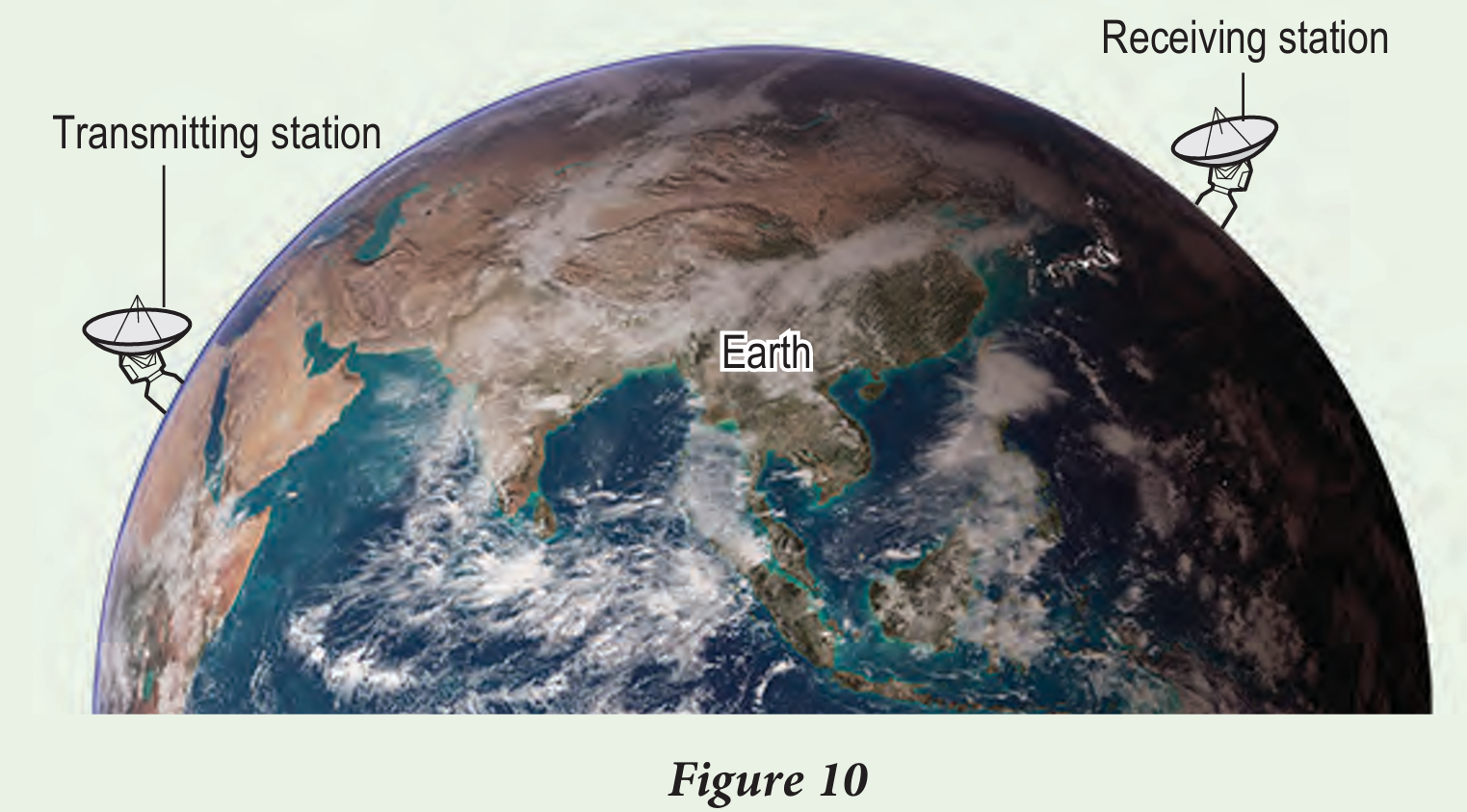Question 10:
Figure 9 shows the pattern of interference produced by three coloured lights in an experiment.

Table 1 shows the coloured lights used in this experiment and the values of wavelength. Complete Table 1 by matching the coloured lights with patterns A, B and C.

Justify your answer.
Answer:


$$ \lambda=\frac{a x}{D} \quad \text { Therefore, } x=\frac{\lambda D}{a} $$
As such, the separation distance between adjacent bright fringes, x is directly proportional to the wavelength, λ.
Blue light with the shortest wavelength produces bright fringes that are closest together.
Red light with the longest wavelength produces bright fringes that are furthest apart.
Figure 9 shows the pattern of interference produced by three coloured lights in an experiment.

Table 1 shows the coloured lights used in this experiment and the values of wavelength. Complete Table 1 by matching the coloured lights with patterns A, B and C.

Justify your answer.
Answer:


$$ \lambda=\frac{a x}{D} \quad \text { Therefore, } x=\frac{\lambda D}{a} $$
As such, the separation distance between adjacent bright fringes, x is directly proportional to the wavelength, λ.
Blue light with the shortest wavelength produces bright fringes that are closest together.
Red light with the longest wavelength produces bright fringes that are furthest apart.
Question 11:
Figure 10 shows a system of communication which involves direct transmission of electromagnetic wave signals from a transmitting station to a receiving station. The distance between the two distant stations and the shape of the Earth cause the receiving station to be unable to receive clear signals directly from the transmitter. You are required to give several proposals to improve the quality of transmission of signal.

Explain your proposal based on the following aspects:
(a) type of wave broadcasted
(b) frequency of wave
(c) method which enables the wave to propagate through a further distance
(d) locations of transmitter and receiver
Answer:
(a)
Microwave is used to carry information.
Microwave is an electromagnetic wave which moves at the same speed as light and does not need a medium for its propagation.
(b)
Microwave has a much higher frequency than radio wave and can penetrate atmosphere without much loss of energy.
(c)
Launch a communications satellite in geostationary orbit to receive signals from transmitting station and send signals to receiving station.
The location of the satellite in the geostationary orbit has to be between the transmitting station and receiving station.
(d)
Transmitter and receiver should be located in a high and open space so that waves sent and received do not experience reflection or diffraction due to obstructing objects nearby.
Figure 10 shows a system of communication which involves direct transmission of electromagnetic wave signals from a transmitting station to a receiving station. The distance between the two distant stations and the shape of the Earth cause the receiving station to be unable to receive clear signals directly from the transmitter. You are required to give several proposals to improve the quality of transmission of signal.

Explain your proposal based on the following aspects:
(a) type of wave broadcasted
(b) frequency of wave
(c) method which enables the wave to propagate through a further distance
(d) locations of transmitter and receiver
Answer:
(a)
Microwave is used to carry information.
Microwave is an electromagnetic wave which moves at the same speed as light and does not need a medium for its propagation.
(b)
Microwave has a much higher frequency than radio wave and can penetrate atmosphere without much loss of energy.
(c)
Launch a communications satellite in geostationary orbit to receive signals from transmitting station and send signals to receiving station.
The location of the satellite in the geostationary orbit has to be between the transmitting station and receiving station.
(d)
Transmitter and receiver should be located in a high and open space so that waves sent and received do not experience reflection or diffraction due to obstructing objects nearby.
